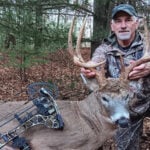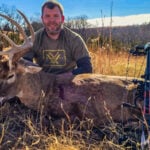The great bowhunting conservationist Aldo Leopold once warned of two spiritual dangers in not owning a farm: You assume breakfast comes from the grocery store and that heat comes from the furnace. And the same could be said for deer camp.
I don’t run such risks when visiting Tom Heberlein’s 75-year-old deer hunting shack in northern Wisconsin. When Heberlein is present, my pancake-and-bacon breakfasts come from his cast-iron skillet.
And even when Heberlein is absent, I know well the origins of the shack’s heat. You’ve heard it takes a village to raise a child? Well, heating Heberlein’s deer shack takes an ever-rotating roster of friends and neighbors. I might wad the paper, crisscross the kindling, and strike a match on a cool October night, but that doesn’t make me the heat source.
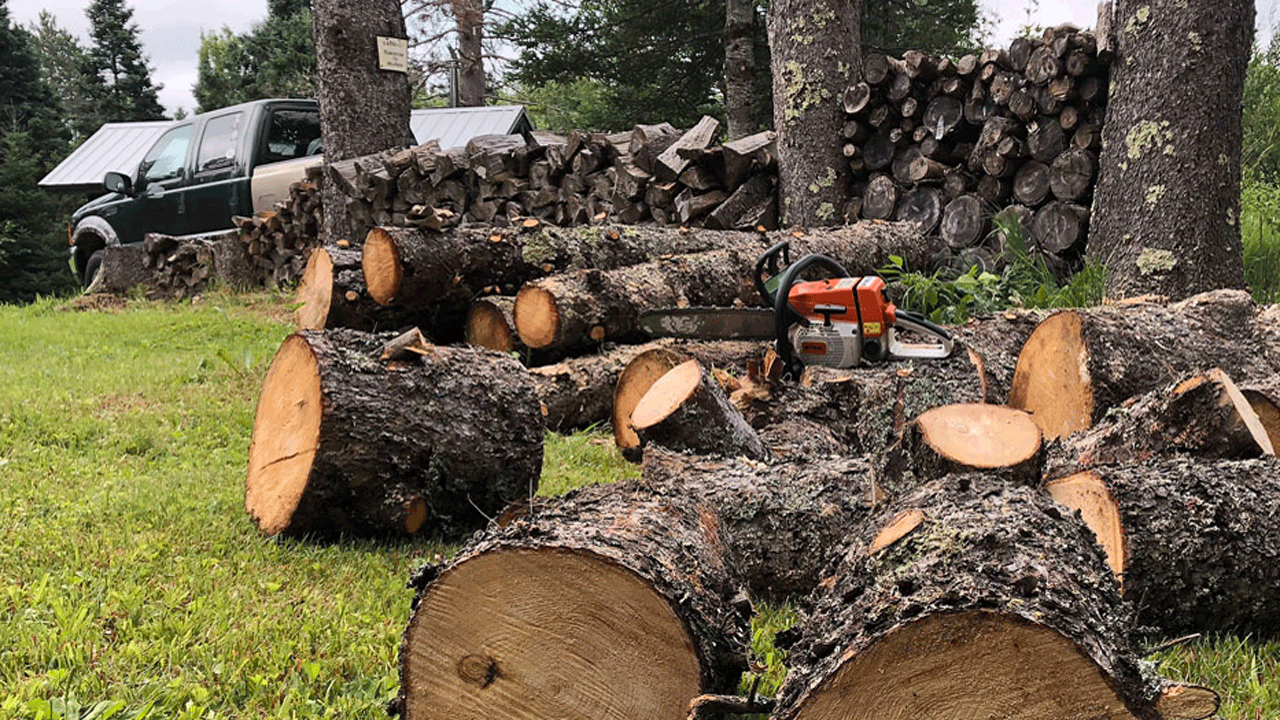
Firewood chunks await splitting outside Tom Heberlein’s shack in Ashland County.
That powerplant has no end and no beginning, at least in human terms. Cutting, splitting and stacking firewood is a cyclical, never-ending deer camp chore that unleashes a higher power. As Leopold wrote after making firewood from his good oak, which held 80 years of June suns: “It is this sunlight that is now being released, through the intervention of my ax and saw, to warm my shack and my spirit through 80 gusts of blizzard.”
If Leopold were part of Heberlein’s crew, he wouldn’t take sole credit for the intervention. The evidence wouldn’t allow it. When you spot firewood stacked outside Heberlein’s sauna, or inside his shack’s vestibule, or alongside his driveway beneath the buck pole, or cached beside trails coursing through his 40 acres of oak, maple, poplars and conifers, you assign broad credit for mining the captain’s wooden fuel.
No matter where we start rolling those credits, let’s concede we’ll overlook somebody, or list them in a sequence that offends someone else. And so we start with Heberlein, who at age 12, helped his father, Charles; and two neighborly farmers, Harold and Arnold Walters; plant thousands of red pines on the property in the late 1950s.
Those seedlings now stand higher and more stout than utility poles. When one dies, its soft wood gets cut into quick-burning wedges to chase the chill from a stove’s steel walls in Heberlein’s shack or sauna.
Reaching those pines requires a trail network cut and graded by long-forgotten loggers, some in the 1800s and others as recently as 2001. No matter the trails’ age or maker, they’re maintained now by Gary Johnson and his powerful brush-cutting, grass-mowing machinery. And if a trail’s low-lying sections grow muddy, Al Conley orders gravel and rock, and patches things up with his Bobcat machine.
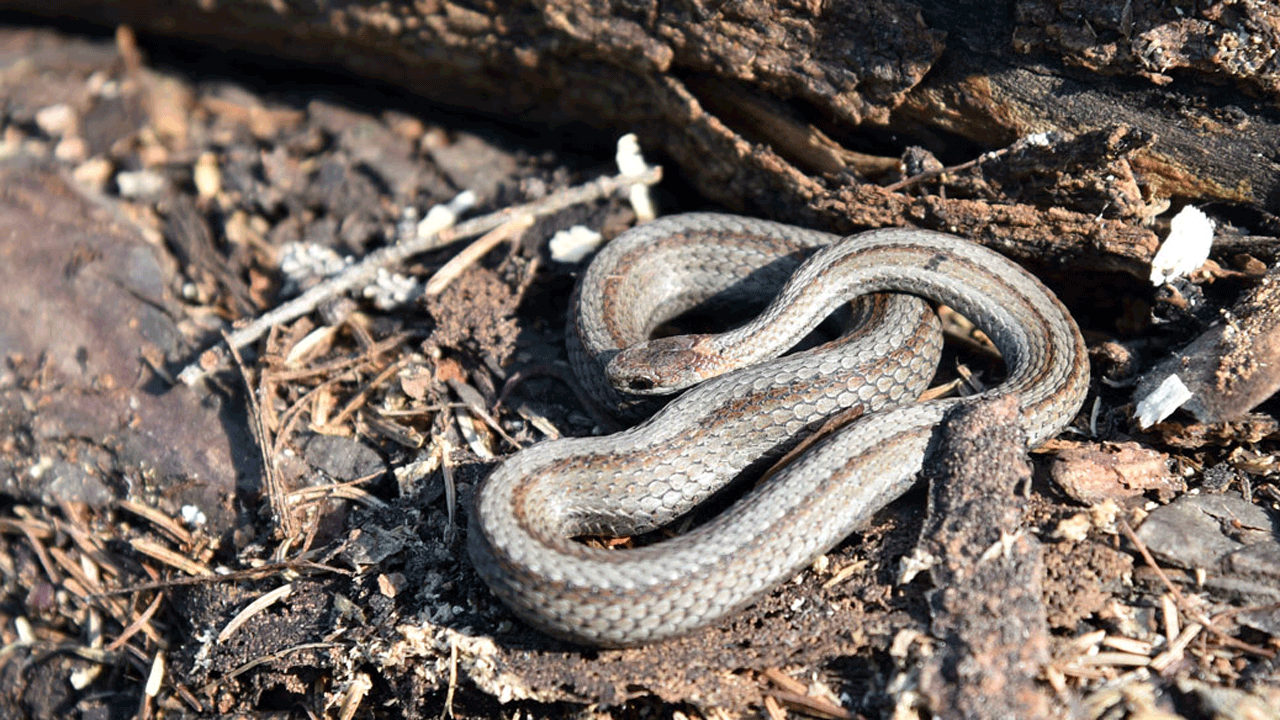
A Northern redbelly snake lies curled atop stacked firewood.
Conley and his wife, Theresa, also ensure Heberlein and his friends have time to make firewood by regularly mowing the yard, thus saving the hassle of raking and hauling grass clippings from overgrowth. And when Theresa Conley isn’t mowing, she’s inside sweeping, cleaning and air-freshening; somehow killing old-shack odors with scents akin to spring rain.
And speaking of time-savers, craftsmen like Gary Evensen and Michael Peyton keep the shack upright and its out-buildings functioning with plumbing, carpentry and solar-energy expertise.
Their work never benefits from plug-in outlets, given that the nearest power line ends two miles from Heberlein’s Northwoods deer camp shack driveway. They can’t just roll out extension cords, and fire up a table saw and pneumatic hammer to make things right once more. That’s why they have generators and compressed air.
Realize, of course, that we’ve yet to praise the chainsaw surgeons, those who handle tree-cutting tasks too risky for weekend hobbyists. The most recent firewood source lies near Heberlein’s shack, the logs cut from two towering spruce trees that once shadowed his driveway. Those giants and three others before them died in sequence, south to north, of spruce budworms.
Heberlein had me drop the three southernmost spruce after their deaths, but called in his experts, Wayne and Becca Eitel at Boomtown Tree Service in Park Falls, to cap the final two after they died, too. Their task was complicated by the fact that one of those spruce also serves as an upright for Heberlein’s seldom-used buckpole, and so he wanted both remaining trees lopped off above the crossbar’s height.
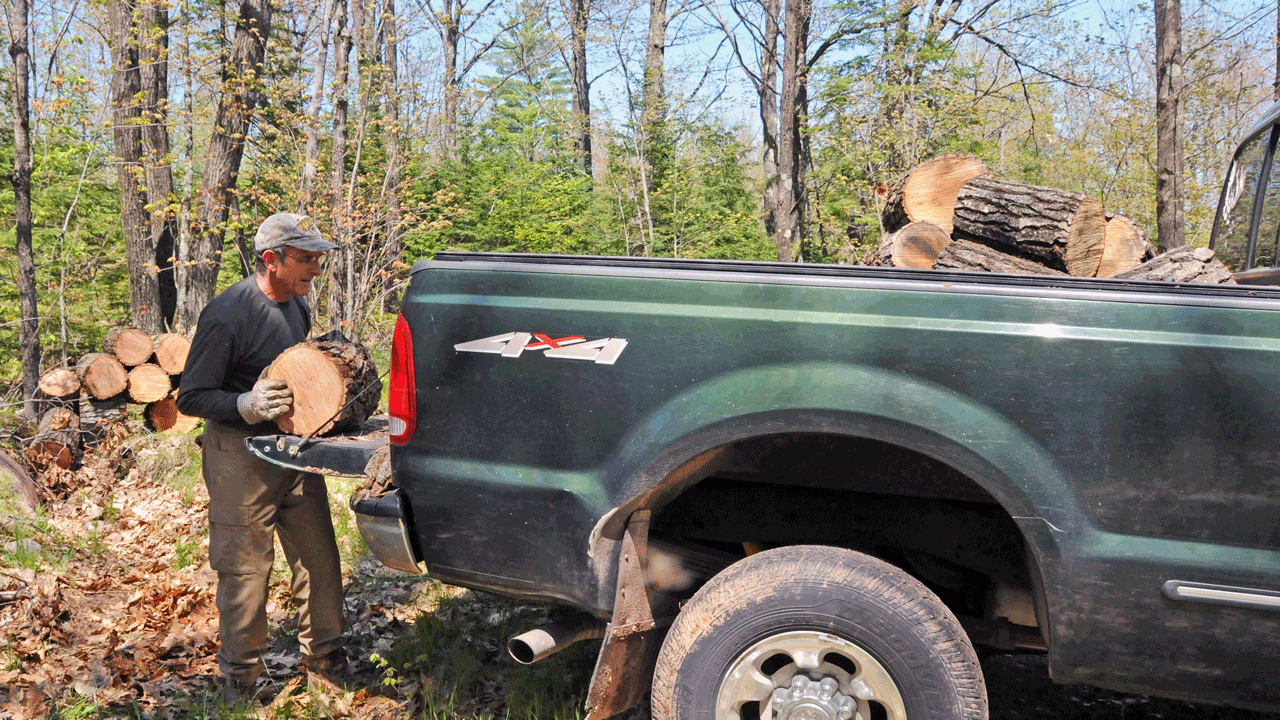
Gathering firewood often means working on hot, buggy afternoons each summer.
Left unspoken in summoning Boomtown Tree Service was that the trees were more likely to topple away from Heberlein’s shack or toolshed, not onto them, with experts atop the ladder instead of an unpaid, uninsured friend armed with a chainsaw and journalism degree. Boomtown did its work professionally, and left the limbed logs to me.
And this is where we finally credit the log-chunkers and wood splitters. These folks are typically Tom “Sawyer” Heberlein’s friends. Instead of charming them into whitewashing fences, however, Heberlein gets them to cut firewood.
In recent years this crew includes me and Walt Kuentzel. We’ve never met, but we cut Heberlein’s logs into firewood lengths and then use his gasoline-powered log-splitter to reduce the chunks into quarters, sixths or eighths, depending on their diameter.
During my 17 years at Heberlein’s deer shack, his log-splitting roster has also included Jay Coggins, Rich Stedman, Leah Durkin, Dick Rott, Leon Heinz, Penny Durkin, Tim Watson and Karen Watson. And the list expands by 15 if you include those who showed up in deer camp Oct. 4, 2014, to drop Heberlein’s lightning-killed oak to re-enact and modernize Leopold’s “Good Oak” chapter in his book, “A Sand County Almanac.”
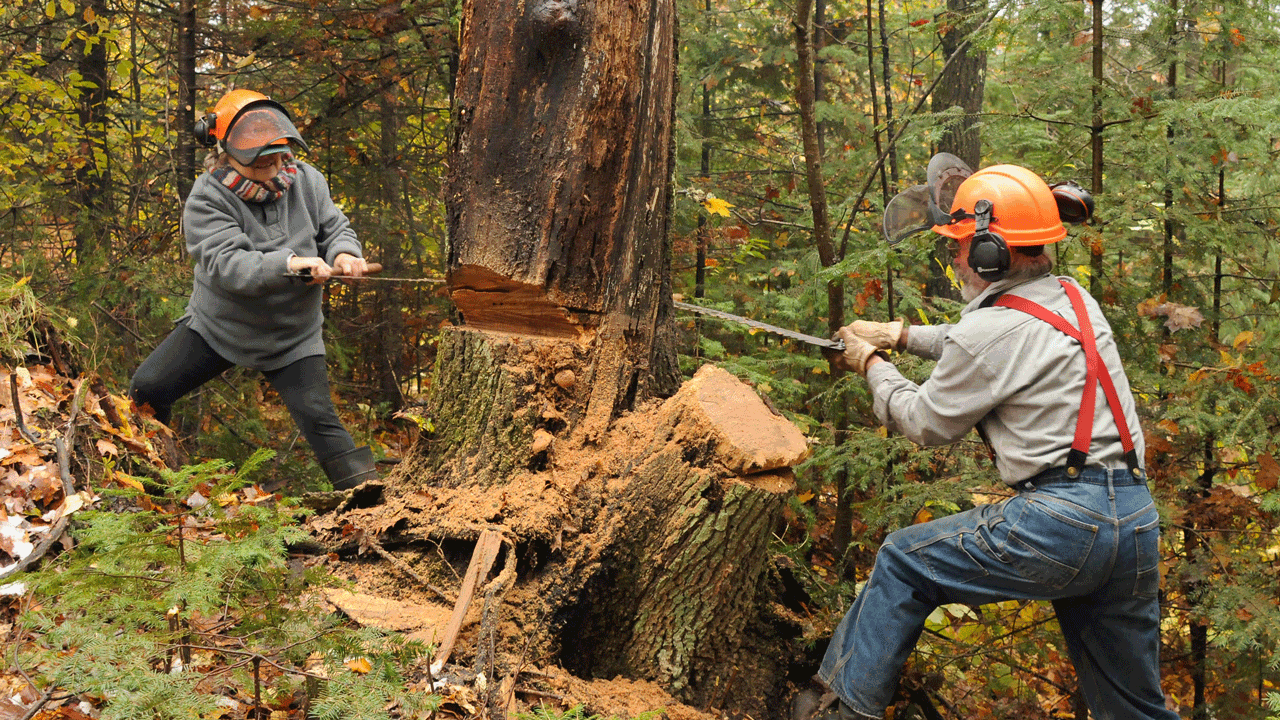
A wood-cutting re-enactment felled a giant oak that provided great firewood for late-October bowhunts.
Realize, of course, that these firewood conscripts volunteer, and mostly enjoy the work and its benefits. Where better place than woodpiles can you find so many shed snakeskins and still-slithering snakes? On a recent July morning, for example, I disturbed a garter snake and Northern redbelly snake while rearranging firewood. The garter flicked its tongue and rearranged itself in jerks and twitches before seeking solitude; while the redbelly posed for photos and refused to budge until I grabbed the chunk beneath its bed and gently rolled the snake off.
Heberlein is an appreciative sort, of course, thanking his helpers for freeing him to tend the shack’s bookkeeping and correspondence. In turn, we’re thankful to visit his shack, burn his propane and relax in his sauna for free.
Besides, hot July afternoons spent beside a deer camp log-splitter beat rounds of golf any day.

 By
By 

